The Holy Prophet Amos is known as the prophet of doom, the third of the Twelve Minor Prophets who lived during the eighth century before Jesus Christ. Amos accurately foretold the destruction of the northern kingdom of Israel due to the unfaithfulness of the Israelites. That is, the tribes of Israel were governed by an idol-worshipper and the people joined in that worship of a golden calf (a false god) instead of the One, Living God. Thus, they rejected the God of Israel.
Biographically, little is known about his life and what we known comes from his book in the Bible, the first to be named after a Hebrew prophet.
The faith of the Church is seen in the liturgical hymns of the Divine Liturgy. In the Kontakion, therefore, for today’s Liturgy commemorates the Holy Prophet in this way:
Having purified your heart spiritually, O glorious Prophet Amos, you received the gift of prophecy from on high and proclaimed to all: “This is our God and beside Him there is no other.”
As point of comparison, today Amos is remembered liturgically by the Byzantine Catholics and Orthodox; the Armenians recall his memory on July 31 and the Latin Church has his feast on March 31.
Why is the Holy Prophet important for us today in the 21st century? The prophets remind us, like they did when they lived, to be faithful to the God who made us and continues to give us his gifts. Perhaps Amos’ own words are helpful to answer the question when he delivers God’s message:
“The people of Israel have sinned again and again, and for this I will certainly punish them. They sell into slavery honest people who cannot pay their debts, the poor who cannot repay even the price of a pair of sandals. They trample down the weak and helpless and push the poor out of the way’’ (Amos 2:6).
Holy Prophet Amos, keep us faithful to God and not false gods, pray for us.
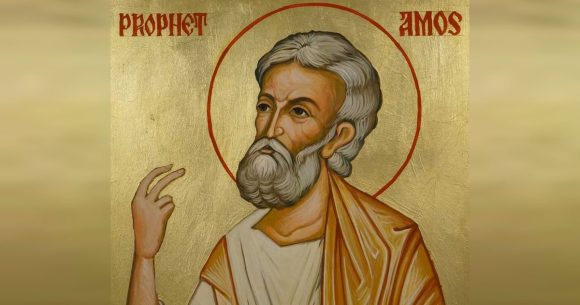
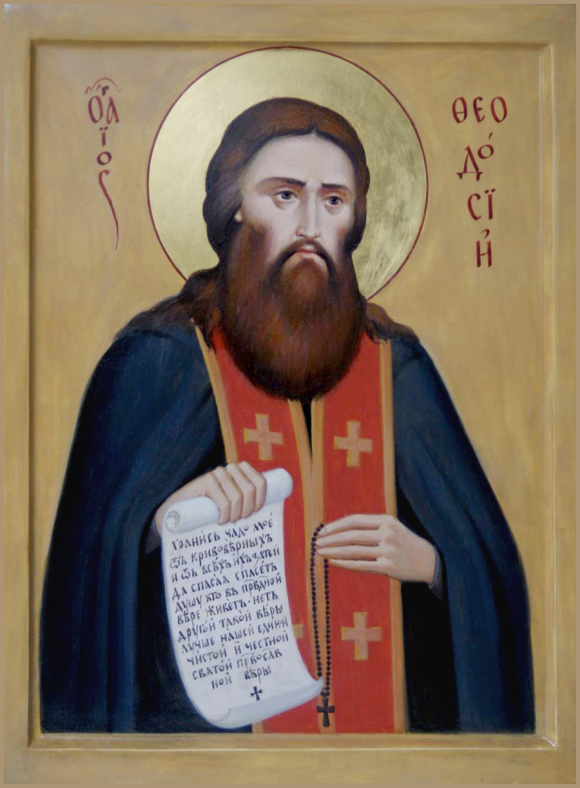
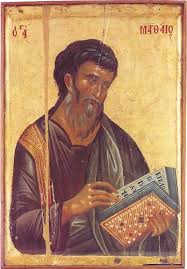 At the beginning of the Fast before Christmas, we celebrate the feast of St. Matthew, who wrote one of the Gospels of the birth of our Lord. (St. Luke is the other.) St. Matthew’s purpose was to show how the prophecies of the Covenant were fulfilled in Jesus. Therefore, he is the son of Abraham and the Son of David. He fulfills the prophecy of Isaiah that a virgin would give birth, the prophecy of Micah that he would be born in Bethlehem, the prophecy of Jeremiah that the innocents would die, and that he would be called a Nazorean. Matthew tells us of the visit of the Magi, the massacre of the innocents, and the flight into Egypt. It is also Matthew who presents to us the model figure of St. Joseph. Just as the Joseph of the Old Testament saved his people in Egypt, so the Joseph of the New Testament saves the hope of the people, Jesus, by taking him to Egypt. We have no better model of human fatherhood. Joseph is a righteous man (Matthew 1:19), who is open to God’s revelation through his messenger angel that the child of Mary is of God, a faith that goes beyond human knowledge. It is Joseph who protects the child, his foster son, so that Jesus, the Savior, could someday fulfill the plan of the heavenly Father. It is Joseph who re-orders his whole life for the sake of his beloved child. Joseph, then, is a model of divine fatherhood, “from whom every fatherhood in heaven and on earth is named. (Ephesians 3:15)”
At the beginning of the Fast before Christmas, we celebrate the feast of St. Matthew, who wrote one of the Gospels of the birth of our Lord. (St. Luke is the other.) St. Matthew’s purpose was to show how the prophecies of the Covenant were fulfilled in Jesus. Therefore, he is the son of Abraham and the Son of David. He fulfills the prophecy of Isaiah that a virgin would give birth, the prophecy of Micah that he would be born in Bethlehem, the prophecy of Jeremiah that the innocents would die, and that he would be called a Nazorean. Matthew tells us of the visit of the Magi, the massacre of the innocents, and the flight into Egypt. It is also Matthew who presents to us the model figure of St. Joseph. Just as the Joseph of the Old Testament saved his people in Egypt, so the Joseph of the New Testament saves the hope of the people, Jesus, by taking him to Egypt. We have no better model of human fatherhood. Joseph is a righteous man (Matthew 1:19), who is open to God’s revelation through his messenger angel that the child of Mary is of God, a faith that goes beyond human knowledge. It is Joseph who protects the child, his foster son, so that Jesus, the Savior, could someday fulfill the plan of the heavenly Father. It is Joseph who re-orders his whole life for the sake of his beloved child. Joseph, then, is a model of divine fatherhood, “from whom every fatherhood in heaven and on earth is named. (Ephesians 3:15)” “The feast of Peter and Paul and the Birth of John the Baptist are ranked as great feasts, after those of Christ and the Theotokos. Icons of the apostles grouped at the Ascension or at Pentecost always picture Peter and Paul at the head of the assembly, although, historically, Paul was not present at either.
“The feast of Peter and Paul and the Birth of John the Baptist are ranked as great feasts, after those of Christ and the Theotokos. Icons of the apostles grouped at the Ascension or at Pentecost always picture Peter and Paul at the head of the assembly, although, historically, Paul was not present at either.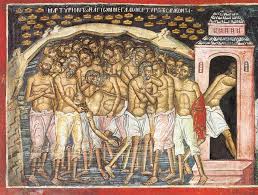 Together let us honor that holy company united by faith, those noble warriors of the Master of all; they were divinely enlisted for Christ and passed through fire and water. The they entered into refreshment and pray for those who cry: Glory Him who has strengthened you; glory to Him who has crowned you; glory to Him who has made you wonderful, O holy Forty Martyrs. (Apolytikion)
Together let us honor that holy company united by faith, those noble warriors of the Master of all; they were divinely enlisted for Christ and passed through fire and water. The they entered into refreshment and pray for those who cry: Glory Him who has strengthened you; glory to Him who has crowned you; glory to Him who has made you wonderful, O holy Forty Martyrs. (Apolytikion)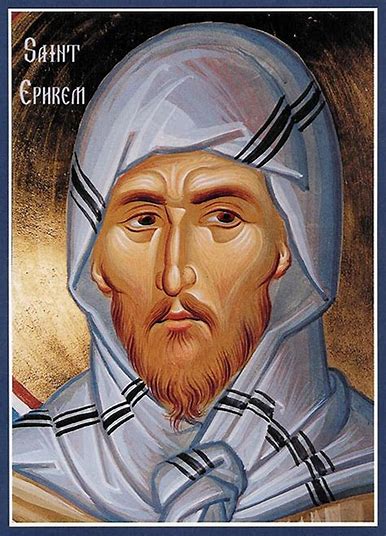 Today, the Church liturgically recalls the life and work of Our Holy Father Ephrem the Syrian.
Today, the Church liturgically recalls the life and work of Our Holy Father Ephrem the Syrian.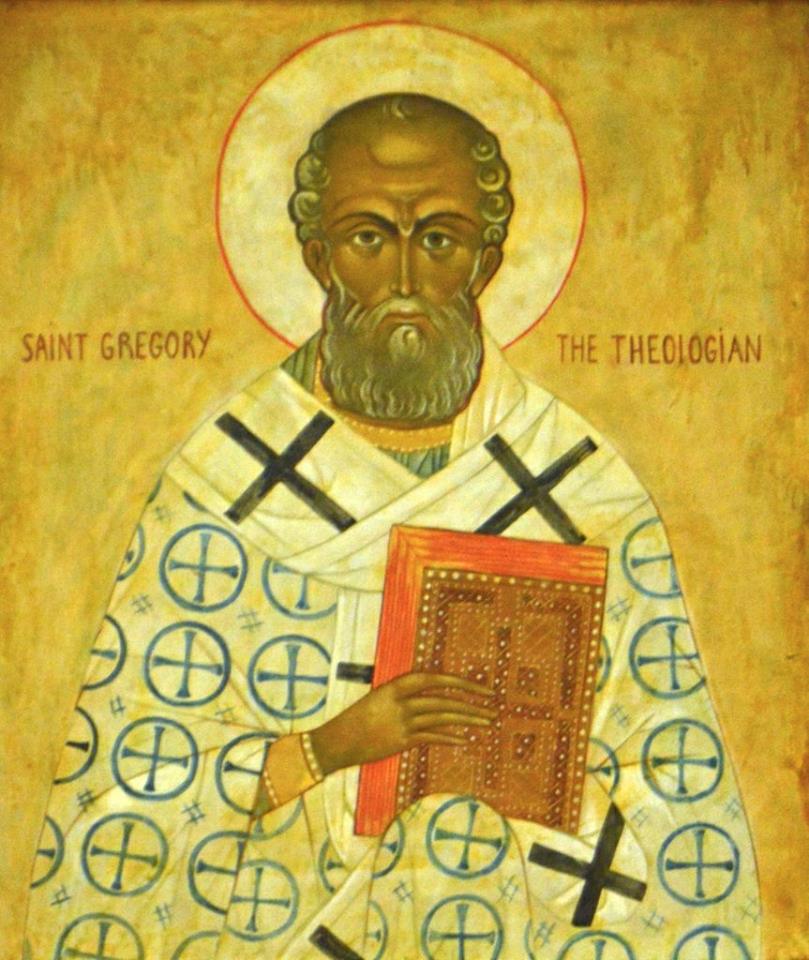 Today the Church liturgically commemorates one the greats: St Gregory the Theologian, Archbishop of Constantinople. The Troparion for this feast reads:
Today the Church liturgically commemorates one the greats: St Gregory the Theologian, Archbishop of Constantinople. The Troparion for this feast reads: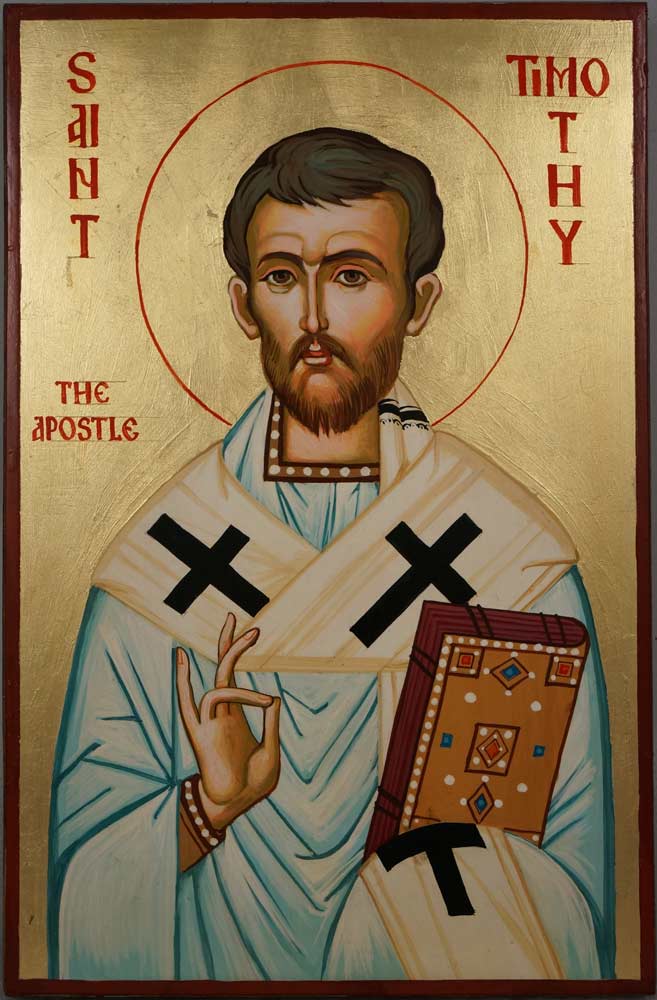 The holy apostle and martyr, Timothy, bishop of Ephesus, is honored by the Church today.
The holy apostle and martyr, Timothy, bishop of Ephesus, is honored by the Church today.